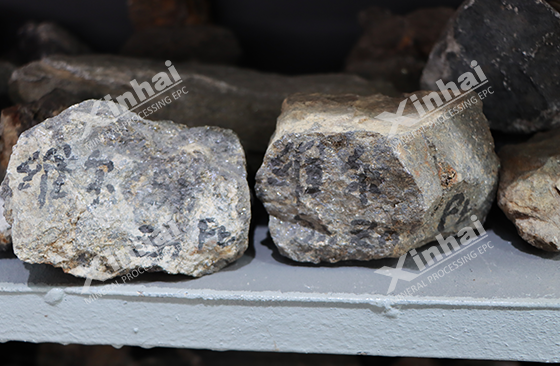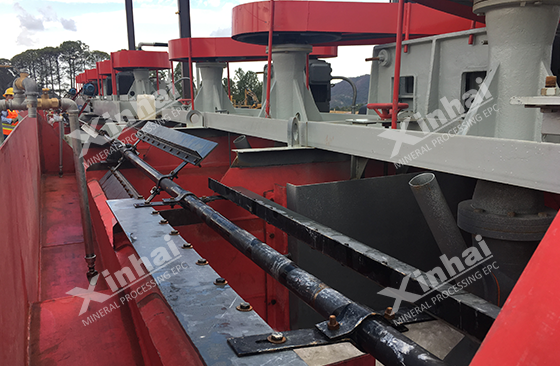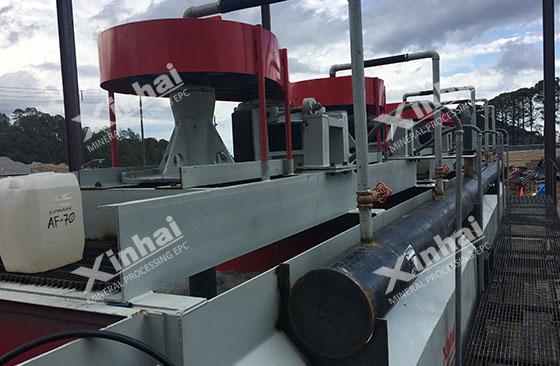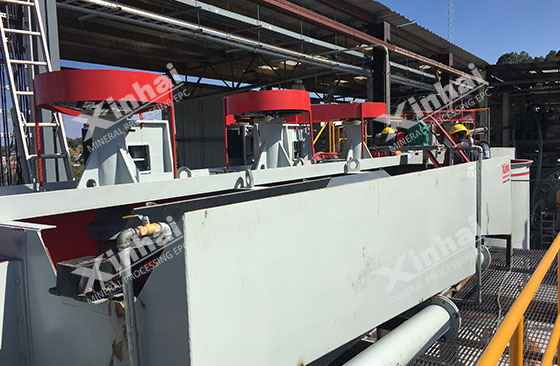Lead and zinc metals are widely used in electrical, mechanical, military, metallurgical, chemical and other fields. With the growing demand for metals year by year, it is urgent to improve the recovery rate of metal ores in ores. Oxidized lead-zinc ores can be divided into three types according to the degree of oxidation: sulfide lead-zinc ore, oxidized lead-zinc ore and mixed lead-zinc ore. Among them, sulfide lead-zinc ore and mixed lead-zinc ore can be treated by flotation, while oxidized lead-zinc ore needs to be treated by flotation method in addition to ore dressing metallurgy or single metallurgical method due to its high oxidation rate, high mud content and dense symbiosis with limonite. The following will introduce the beneficiation process of the above three lead-zinc ores.
Use the table of contents below to navigate through the guide:
01Sulfide lead-zinc ores dressing process

The main mineral components of sulfide lead-zinc ore are galena and sphalerite. Its flotation process can be divided into three types: priority flotation, mixed flotation and equal flotation. Most sulfide lead-zinc ores choose to use the priority flotation process, first suppressing zinc ore and then floating lead ore. The main reason for using "floating lead and suppressing zinc" is that galena has good floatability and is difficult to be activated after suppression. In addition, the zinc content in most sulfide lead-zinc ores is higher than the lead content. According to the principle of "floating less and suppressing more", it is conducive to economic rationality.
02Oxidized lead-zinc ores beneficiation process
For the flotation of oxidized lead-zinc ores, it can be divided into the selection of oxidized lead ore and oxidized zinc ore. The oxidized lead ore is generally separated by the sulfide xanthate flotation method, and the oxidized zinc ore is generally separated by the sulfide amine flotation technology.

1 Oxidized lead ore beneficiation
The oxidized lead ore beneficiation methods can be divided into several methods such as single flotation, gravity separation, combined flotation and metallurgy. Oxidized lead ore can be divided into two categories: easy to select and difficult to select. Their main beneficiation methods are as follows:
1.1 Easy-to-select lead oxide ore
For this type of ore, a combined beneficiation method of single flotation and gravity separation + flotation can be used. The flotation method can be sulfidation flotation and fatty acid flotation, and the former is commonly used. If the ore contains lead alum and the properties of the gangue minerals are relatively complex, the heavy liquid separation method can be used to prove that lead concentrate can be obtained through gravity separation. For the gravity-selected ore and muddy part, metallurgical methods can be considered.
1.2 Refractory lead oxide ore
When iron hydroxide is the main gangue mineral in the refractory lead oxide ore, and most of the lead is closely combined with iron hydroxide, it is necessary to first find out which part of the lead is associated with iron ochre and which part is a separate mineral. In addition to phase analysis, gravity separation and magnetic separation methods are also needed to separate iron minerals and gangue minerals.

2 Ore dressing of zinc oxide ore
When zinc exists as a single mineral, it can be recovered by flotation. There are four available flotation methods:
① Heating sulfidation method: This method is mainly suitable for the treatment of smithsonite ore. The slurry is heated to about 70°C, sodium sulfide and copper sulfate are added for sulfidation and activation, and then high-grade xanthate is used as a collector for flotation.
② Fatty acid reverse flotation method: This method is mainly used to treat dolomitized limestone containing a small amount of silicate and iron oxide in the gangue mineral. During operation, smithsonite is first inhibited by sodium fluoride, and then oleic acid is used as a collector to separate the gangue mineral from smithsonite.
③ Fatty acid positive flotation method: This method inhibits silicates and iron oxides by sodium hydroxide and water glass, and uses citric acid to inhibit alkaline earth metal carbonates, and then uses oleic acid as a collector to float smithsonite.
④ Amine method: In this method, after the original ore is desludging, sodium sulfide is added at room temperature for sulfidation. Subsequently, the zinc oxide mineral is floated in an alkaline pulp using a first amine collector having a carbon chain length of 8 to 18.
03Ore dressing process of mixed lead-zinc ores
The flotation method of mixed lead-zinc ores can be selected according to the characteristics of sulfide ore and oxide ore, but the appropriate flotation order needs to be determined. Common flotation schemes include: lead sulfide-lead oxide-zinc sulfide-zinc oxide or lead sulfide-zinc sulfide-lead oxide-zinc oxide. When the lead oxide content is low, the first scheme is usually selected; if the lead oxide content is high, the second scheme is better.

From the above, it can be seen that flotation is the main beneficiation method of lead-zinc ores. A combined process of flotation after gravity separation can also be used, supplemented by metallurgical methods for metal recovery. For example, after obtaining a low-grade lead-zinc concentrate through beneficiation, the metal can be further extracted through sulfuric acid leaching, purification and other processes. In addition to the above-mentioned flotation processes, a series of innovative flotation processes have been developed in actual production, such as iso-floatable flotation, branched series flotation, etc., which are widely used in actual beneficiation.


 marketing@ytxinhai.com
marketing@ytxinhai.com  0086 13810327080
0086 13810327080 






































































































 CHAT
CHAT MESSAGE
MESSAGE






